Welcome to the lush and rewarding world of bathroom gardening, where even the smallest spaces can be transformed into vibrant sanctuaries! Whether you’re a seasoned horticulturist or just dipping your toes into the soil of indoor gardening, this guide is here to show you how to make the most of your bathroom’s unique environment. Imagine stepping into a personal oasis each morning, filled with greenery that not only elevates your mood but also purifies the air around you.
This carefully curated list of the best plants for your bathroom offers both aesthetic charm and practical benefits. You’ll discover how these resilient plants thrive in higher humidity, making them perfect companions for steamy showers and soothing baths. With our expert tips, you’ll feel confident in your ability to nurture these lush additions to your home, transforming your bathroom into a serene retreat. Let’s embark on this delightful journey of cultivating beauty and tranquility, right where you start and end your day.
Boston Fern (Humidity-Loving Air Purifier)
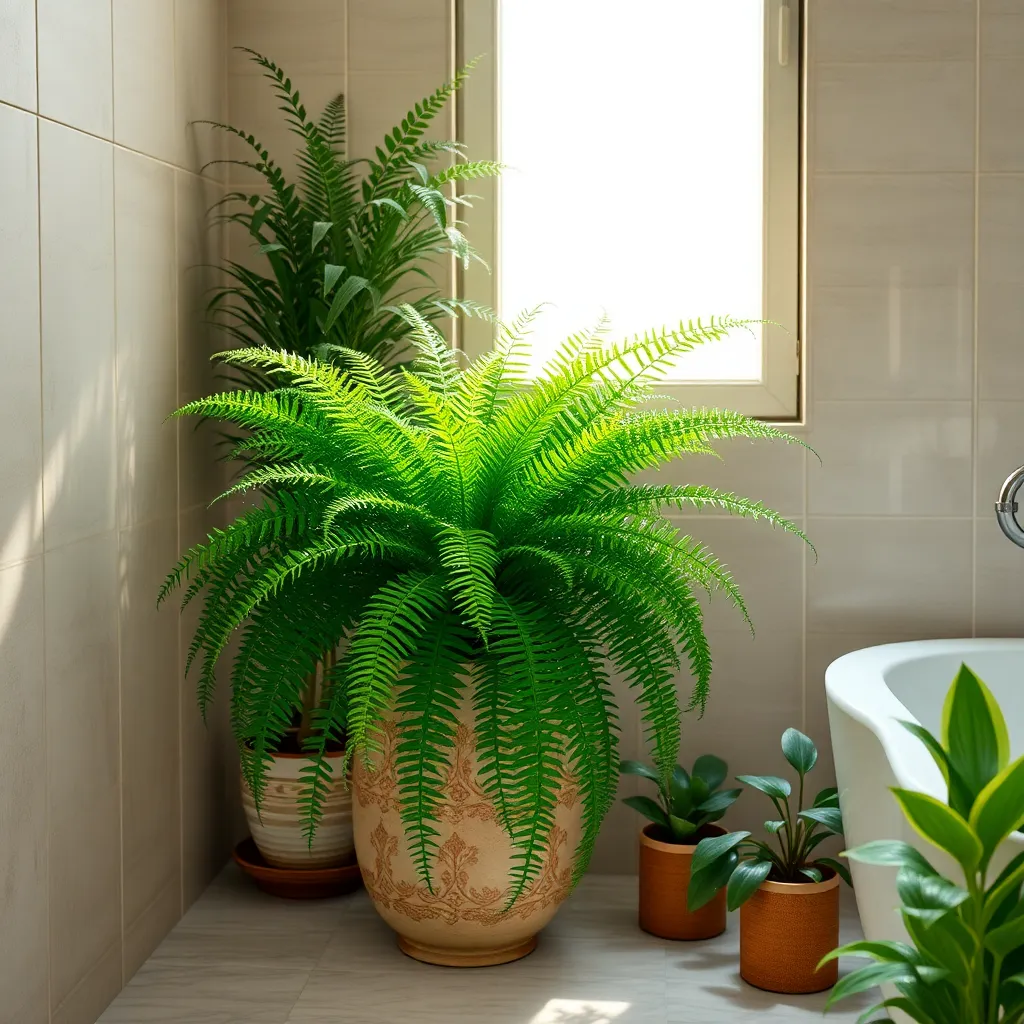
Boston Ferns are an excellent choice for bathrooms due to their love for high humidity, which mimics their natural rainforest habitat. Place them in a spot where they receive indirect sunlight, as direct sun can scorch their delicate fronds.
Keep the soil consistently moist but not soggy by watering them thoroughly once a week, allowing the top inch to dry out between waterings. For best results, use a well-draining potting mix, such as one containing peat moss, to help retain moisture while preventing waterlogging.
Maintaining the right humidity is crucial for Boston Ferns to thrive. If your bathroom isn’t naturally humid, consider using a small humidifier or misting the plant regularly to boost moisture levels.
Fertilize your Boston Fern with a water-soluble houseplant fertilizer every 4 to 6 weeks during the growing season to encourage lush growth. For a more advanced care tip, occasionally prune away any brown or dead fronds to promote new growth and keep the plant looking its best.
Peace Lily (Low-Light Blooming Beauty)
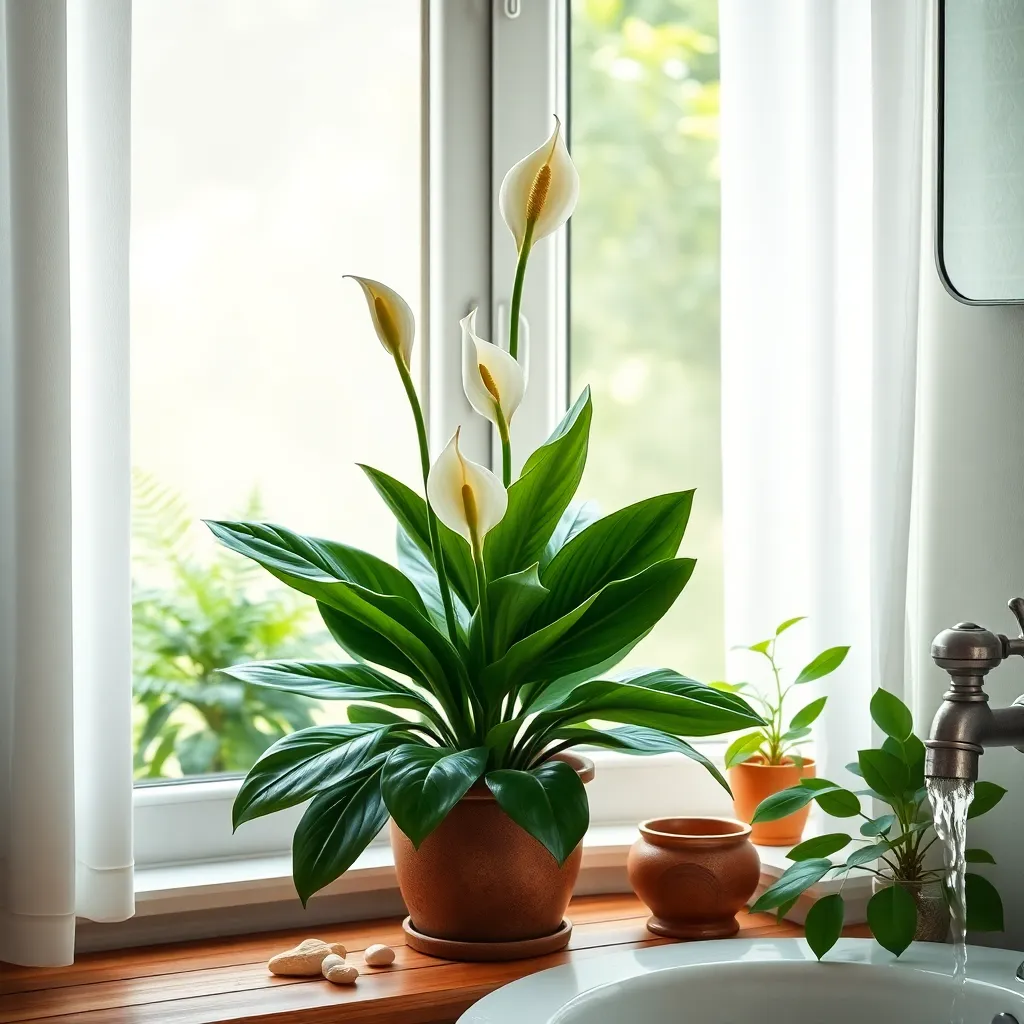
The Peace Lily, known for its elegant white blooms, is a perfect addition to your bathroom as it thrives in low-light conditions. Its ability to purify the air makes it a dual-purpose choice for improving both the aesthetic and air quality of your space.
When caring for a Peace Lily, ensure its soil is kept slightly moist by watering once a week, allowing the top inch to dry out between waterings. Use a well-draining potting mix enriched with organic matter to provide the nutrients the plant needs without risking root rot.
For optimal growth, place your Peace Lily in a spot with indirect light, such as near a shaded window or under artificial lights. While it can tolerate low light, providing some bright, filtered light will encourage more frequent blooming.
Advanced gardeners might consider occasionally misting the leaves to mimic the plant’s natural humid habitat, especially during drier months. Fertilize sparingly, using a balanced liquid fertilizer diluted to half strength every 6-8 weeks during the growing season to avoid over-fertilization.
Spider Plant (Resilient and Child-Friendly)
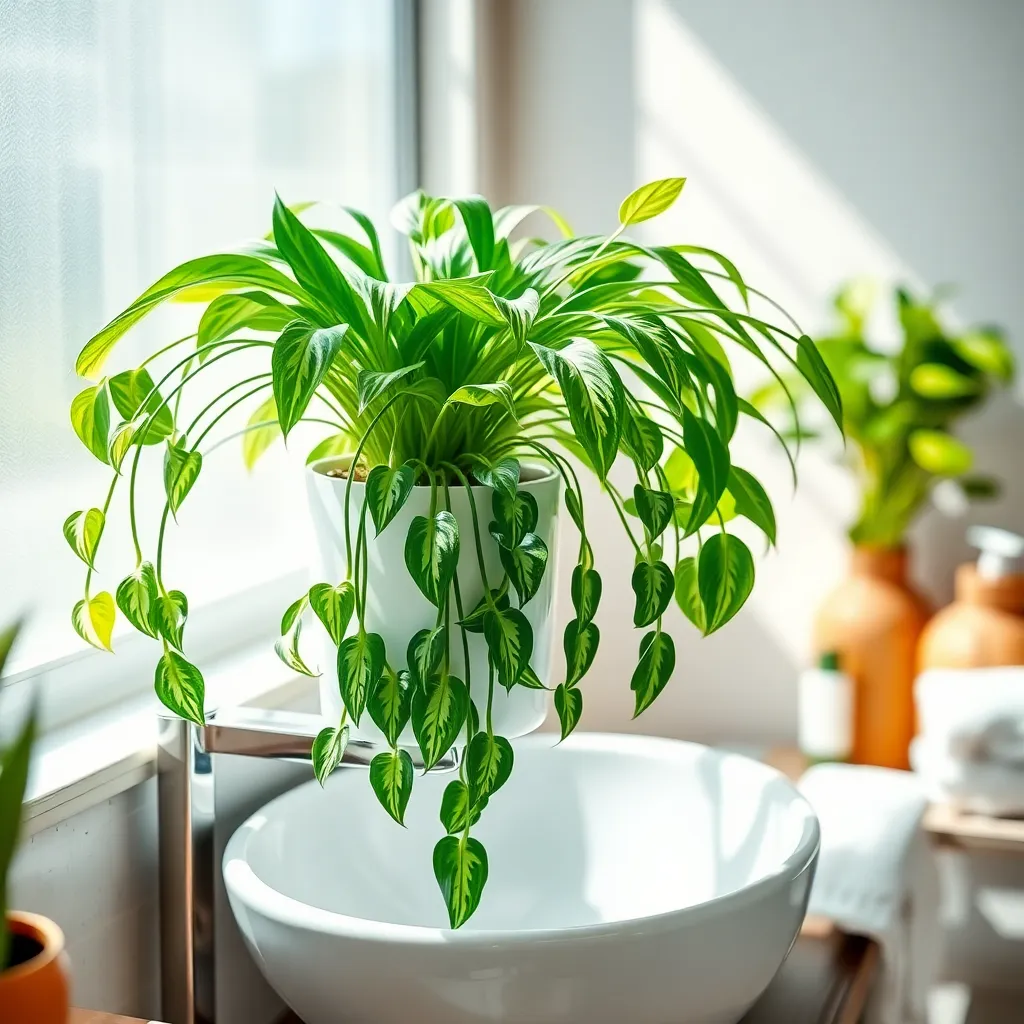
Following the Peace Lily, the Spider Plant is another excellent choice for your bathroom. Known for its resilience and adaptability, this plant thrives in the humid environment typical of a bathroom setting.
The Spider Plant prefers indirect sunlight, making it ideal for bathrooms with small or frosted windows. If your bathroom lacks natural light, consider using a grow light to ensure your Spider Plant receives enough illumination.
Watering is straightforward with this plant; keep the soil slightly moist without waterlogging. A simple way to achieve this is by watering every 1-2 weeks, allowing the top inch of soil to dry out between waterings.
For optimal growth, use a well-draining potting mix that retains some moisture but prevents root rot. You can create a suitable mix by combining equal parts potting soil, perlite, and orchid bark.
Spider Plants are not only hardy but also child-friendly, as they are non-toxic to pets and humans. This makes them a perfect choice for families looking to add greenery without worry.
Aloe Vera (Compact and Medicinal)
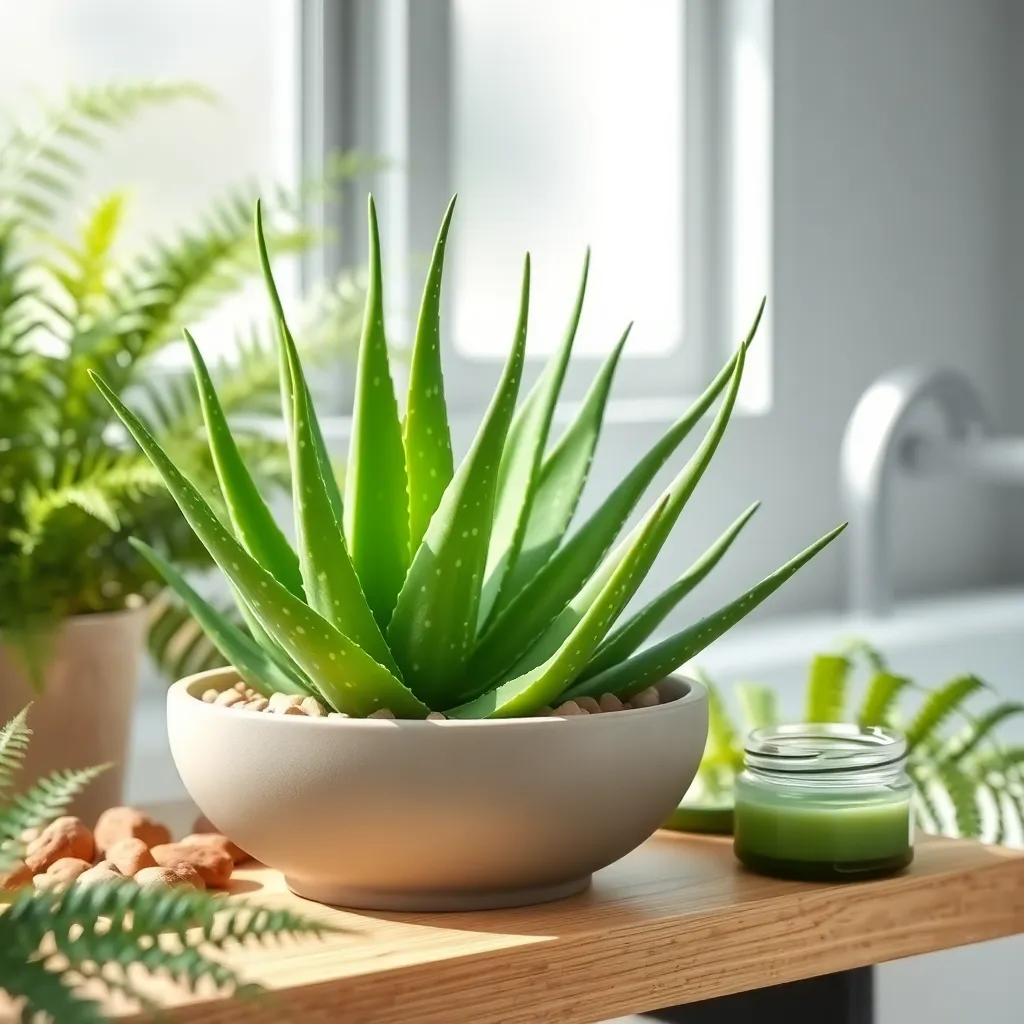
Aloe Vera is a fantastic choice for your bathroom, thanks to its compact size and medicinal properties. It thrives in the humid environment typical of bathrooms, making it an easy-care plant for both beginners and seasoned gardeners.
Position your Aloe Vera near a window with bright, indirect light, as it prefers well-lit spaces. If natural light is limited, consider using a grow light to ensure it receives enough illumination to thrive.
Water your Aloe Vera sparingly, allowing the soil to dry out completely between waterings. Overwatering can lead to root rot, so ensure the pot has adequate drainage to prevent water from pooling.
For optimal growth, use a cactus or succulent potting mix that provides excellent drainage. With the right care, your Aloe Vera can be a long-lasting addition to your bathroom, providing both aesthetic appeal and a handy remedy for minor burns and skin irritations.
Orchid (Elegant Moisture-Absorber)
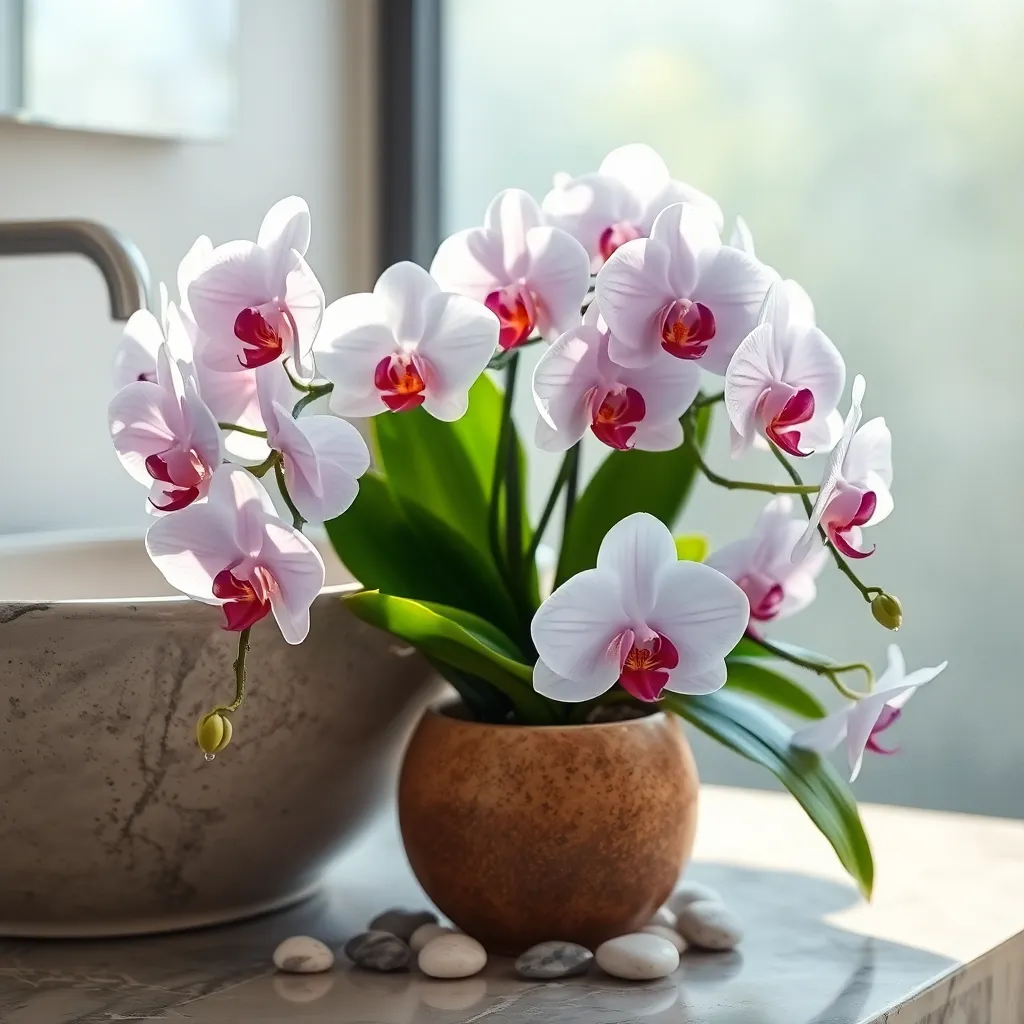
Orchids are a wonderful addition to your bathroom, acting as both a decorative element and a natural moisture absorber. These elegant plants thrive in the high humidity typical of bathrooms, making them a perfect fit for such environments.
When caring for orchids, it’s crucial to ensure they receive plenty of indirect sunlight. Positioning them near a north or east-facing window is ideal, as this provides the gentle light they need without risking sunburn.
Watering your orchid correctly is key to its health; they prefer a “soak and dry” routine. Allow the potting medium to dry out completely between waterings, then thoroughly soak the plant to mimic the natural rainfall they experience in the wild.
For beginners, using a specialized orchid potting mix is recommended, as it provides the necessary aeration and drainage. More experienced gardeners might consider experimenting with different bark and moss combinations to optimize growth and flowering.
To encourage blooming, maintain a stable temperature and avoid placing orchids near temperature fluctuations like drafty windows or heat vents. Fertilizing orchids every two weeks during their growing season can also promote vibrant blooms.
Conclusion: Growing Success with These Plants
In exploring the best plants to grow in your bathroom, we’ve also unearthed five key concepts that parallel nurturing healthy relationships. First, we discussed the importance of creating the right environment, much like fostering a supportive and understanding space for your partner. Second, we emphasized adaptability, as plants and relationships alike thrive when they adjust to changing conditions. Third, consistency in care was highlighted; just as plants need regular watering, relationships flourish with steady attention and love. Fourth, we acknowledged the beauty of diversity, celebrating how different plants—and people—bring unique strengths to our lives. Finally, patience was underscored, reminding us that growth takes time and persistence.
As an immediate next step, consider introducing a plant into your bathroom as a daily reminder of these relationship principles. Let it inspire you to cultivate your connections with intention and care.
Remember to bookmark this article, so you can revisit these valuable insights whenever you need a little guidance or encouragement. Embrace this journey with optimism and watch as your relationships, like your plants, grow and thrive. Here’s to nurturing bonds that are as resilient and beautiful as the green companions in your bathroom.
